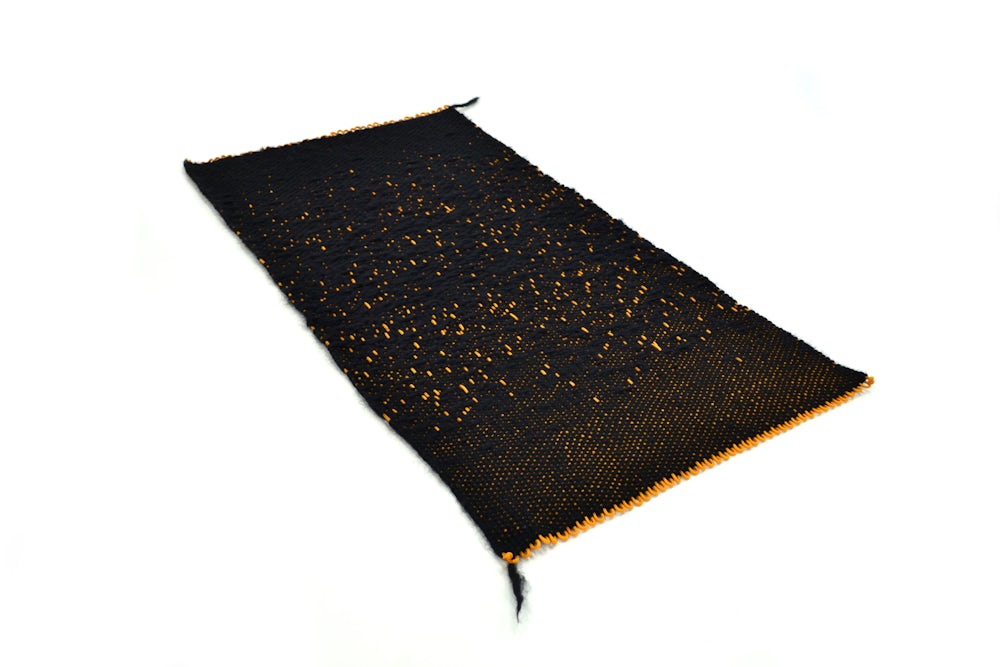Marike Jungk
"Broken Cipher, Woollen Weave"
Section MS3, Linn Phyllis Seeger
Keywords: technology, encryption
Broken Cipher, Woollen Weave is a woven work investigating the glitch in analogue media, interrogating how spontaneous structural errors can manifest in textiles. While of unknown origin, the term glitch has become almost exclusively associated with the digital realm where it is understood as a spontaneous and random malfunction of soft- or hardware.1 In the academic canon, it is argued that glitches expose the inner workings of encrypted technology, reminding the user that even technology programmed for perfection has potential for error. In Jakko Kemper’s writing on the subject, glitches additionally affect the user experience of the digital realm through their exposure of technology’s opacity and fallibility. Through this structural definition, glitches have become a key feature of digital and new media art; their application in analogue art forms, however, remains almost exclusively aesthetic.2 The use of the glitch as an pictorial aesthetic fails to consider the underlying logic shared by both digital environments and textile arts - one of the binary, of 1s and 0s, and of a clear over or under of the weft thread. As the over and under of the weft thread is often abstracted into black and white pixels to communicate a specific weave pattern to machines and other human weavers they offer an opportunity to introduce image-based glitches, randomising the distribution of pixels in the pattern. As the automation of textile manufacture has rendered the random occurrence of errors basically impossible, imperfections in fabrics can only be produced by and are understood solely as a mark of the human hand. The notational patterns of tabby and twill weave, two of the most common and simplest patterns, were gradually randomised in a Grasshopper script. The resulting pattern notation was woven by hand on a frame loom, producing a 60 x 100 cm fabric of black wool and orange paracord. The shift in scale of the materials from thread to string reveals both the original unaltered structure of tabby and twill weave and the imperfections of the glitch, with colours chosen for their similarity to the early plasma screen of the 80s. In the final tapestry, the glitch is thus transformed into a tactile manifestation of structural nature within the fabric.
While there are similarities to the Yiddish word גליטש (glitsh, meaning slip), an etymological relationship has not been proven. ↩
Cf. Philip David Stearn’s Glitch Textiles, in which the image of a glitch is transformed into woven textiles using a Jacquard loom. Their imperfection is aesthetic, but still produces an unaltered fabric. ↩




